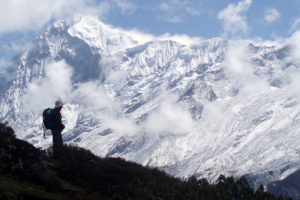While the view of the mountains conjures one’s responses of awe and appreciation of nature’s beauty, capturing these emotions using the device can be quite tough. Indeed, doing mountain photography is more difficult than most people think. If you are going on a trip to New South Wales for a luxury accommodation Central Coast or to explore the wonders of the area, this article is for you.
Maybe people have this notion that it is easy for mountain photographers to capture these beautiful landforms because they get to point their cameras into the direction of a subject that is just there—stationary. Yet many people don’t realize that getting the desired outcome of a magnificent mountain photo usually involves photographers doing trial and error. They take as much as photos as they possibly can with the use of a variety of lenses, as well as tweak their cameras’ settings. More importantly, they take into account natural light, which is one of the most crucial aspects in taking perfect landscape pictures.
Light in relation to taking mountain landscape pictures takes into consideration these pertinent characteristics which help a photographer in obtaining the desired effect that people want to see. One of them is the quality of light. Here, light is either soft or intense if the weather condition is cloudy or sunny, respectively. Another quality of light that should be taken into consideration is the direction where the light is coming from. Here, light is either at the side, at the front, or the back of the mountain. The temperature of light is also considered, which is determined on the time of day—sunrise, sunset, or midday.
Meanwhile, here are some of the other considerations in taking great mountain photos aside from taking advantage of light:
Mountains should not always be the only thing that stands out in the photos
Well, they should always be standing out, but including trees and other foliage, rocky formations, cabins and other man-made structures, wildlife, or water systems such as lakes and rivers would perfectly complement the resulting landscape mountain photos. These elements are found in photos’ foreground, creating a great sense of depth. However, it is important to not overcrowd the foreground so as not to distract the viewer.
The sky should always be a part of the mountain landscape
The sky is another element that helps define mountain photos. It can dominate the landscape than the foreground, especially if it evokes drama and some interesting colors and cloud formations. However, it may not dominate the landscape, especially if it is quite boring, so the photographer must put emphasis on the foreground and on the mountain itself.
Mountains may not be moving, but some other elements around it do
Blowing wind through foliage and trees, moving clouds, and flying birds in the air are just some of the many natural movements that occur within mountainous environments. Thus, it is important to also capture them along with the dominating mountain landscape in order to accentuate the resulting photo’s mood and drama. Longer shutter speeds are imperative to capture such moments, which would require smaller apertures and use of filters.
Wide lenses capture everything
Landscape photos should let the viewer see the whole scene. This is especially important in taking pictures of mountains. Indeed, if the viewer finds something that is missing on the photo, there would be no point in enjoying the scenic beauty of the subject.
Mountains are truly photogenic. So when you visit NSW, after you book your luxury accommodation Central Coast, make sure to visit the Greater Blue Mountains area as well. These natural beauties provide angles and overall inspiration for photographers to capture with the use of their cameras and lenses. But in order to capture the perfect landscape photos, the very important aspect of light, as well as the other things listed above, must be considered.



















